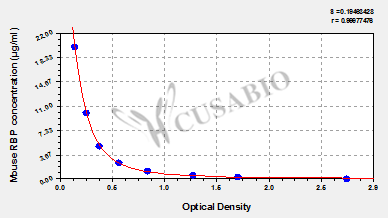This mouse RBP4 ELISA kit employs the quantitative sandwich enzyme immunoassay technique to measure the levels of mouse RBP4 in multiple samples, including serum, plasma, urine, or tissue homogenates. It also uses the enzyme-substrate chromogenic reaction to visualize and analyze the analyte levels through the color intensity. The intensity of the colored product is in direct proportion to the RBP4 levels in the sample and is measured at 450 nm through a microplate reader.
RBP4 is the major transporter of the hydrophobic molecule retinol or vitamin A in circulation. It transports retinol from the liver to the peripheral tissues. Plasma RBP4 levels positively correlate with retinol levels. RBP4 also transports adipokine and fatty acid. Studies have found that RBP4 functions as a hepatokine and mediates the effects of the molecular clock on glucose metabolism in mice. RBP4 is implicated in a variety of human conditions that include impaired vision and ocular diseases, disorders of glucose and lipid homeostasis, and cardiovascular diseases.






